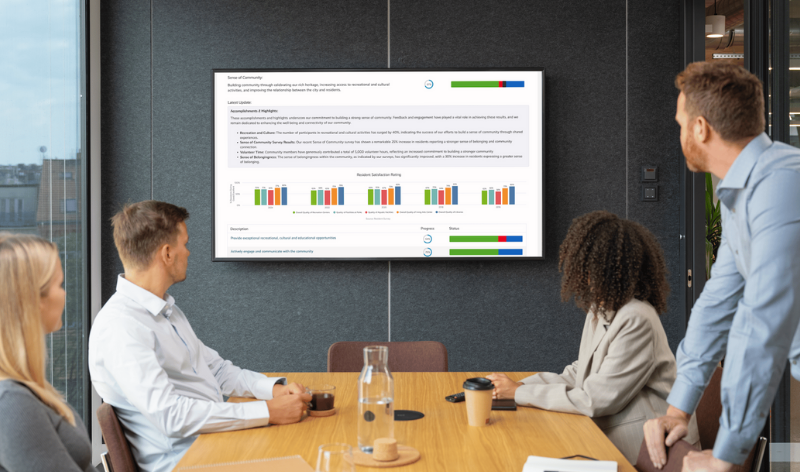Contents
Over the years there have been numerous attempts to create a scalable structure for cities to develop and implement data-based performance management systems, but few have been as effective and straightforward as the What Works Cities certification developed by Bloomberg Philanthropies.
The program, which started in April 2017, provides a methodology for assessing how well your local government manages and uses data to make informed decisions in eight categories:
- Data Governance
- Evaluations
- General Management
- Open Data
- Performance & Analytics
- Repurposing
- Results-Driven Contracting
- Stakeholder Engagement
The categories themselves provide a high-level glimpse into the structure of a good performance management program, but it’s the criteria under each area that provide actionable best practices that any local government could benefit from.
A roadmap for using data to make decisions
The specific criteria under each category provides a wealth of information for cities interested in making progress toward a comprehensive performance management program. For instance, one of the specific concepts under “Performance & Analytics” is “1. Your local government identifies strategic goals, aligns a diverse set of measures with those goals, and uses data to evaluate progress toward them.”
There’s a lot to unpack there, but the critical concepts are obvious – have a strategic plan and track progress on plan execution. You’ll want to make sure you have the right performance management tools in place to deploy the plan, track the progress and status of the action items, and explicitly link performance measures to plan elements.
Another criteria builds on the outcomes of that first idea: “3. Your local government regularly shares its strategic goals, performance measures, and progress toward achieving those goals with the public.”
Our customer, Scottsdale, Arizona achieved silver level certification by What Works Cities in 2019. The What Works Cities assessment noted that part of what made their program successful was that “The City is publicly reporting on…progress through a public-facing performance management portal, and provides performance data to collective benchmarking databases.” Using a performance management structure, visualizations, and dashboards allows them to tell their story using data and maintain transparency around the effectiveness and efficiency of their services.
At Envisio, we see the certification process as a way to create momentum as you’re building your program, based on proven methods.
Not ready for prime time? Take a do-it-yourself approach
Even if you’re under the population minimum of 30,000 residents – or just not ready to undergo a rigorous evaluation – taking the time to do a self-assessment against the 45 criteria will provide you with a solid baseline for your current systems and allow you to identify gaps in your program.
A great approach would be to convene a cross-functional task team to perform the self-assessment. Team members will get a crash course in data and performance management best practices by studying the criteria, and the diversity of perspectives in the committee will help form a clear view of your current implementation.
Each criteria can be examined from three perspectives: Do we have the policy or process in place? Have we deployed it throughout the organization? Do we have any outcomes or changes attributable to it?
Having a policy or process (e.g., using data to align the budget with strategic priorities) is a great start, but it’s important to determine if departments are actually using the process and if it has resulted in any tangible outcomes.
As in the strategic goal criteria mentioned above, the first step is to have goals and measures, with each subsequent criteria building on the use of that information.
Once you’ve assessed your accomplishment across the criteria, a gap analysis will help you identify and prioritize next steps on your performance management journey. Focus first on the areas where you don’t have a policy or process and then on areas where you haven’t yet deployed it in the organization.
You can start your journey by using What Works Cities’ online assessment tool.
For more ideas in managing your performance, download our guide “How to Start a Performance Management Program.”




